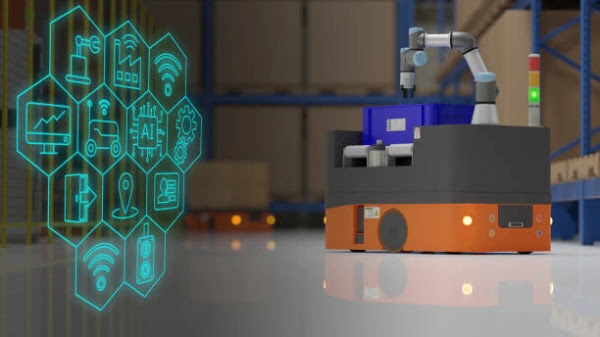Featured
- Get link
- X
- Other Apps
Cybersecurity Challenges
The Era of Smart Devices
Introduction
The proliferation of smart devices, ranging from smartphones
and tablets to internet-connected appliances and wearable gadgets, has
revolutionized the way we live and interact with the world around us. While
these devices offer convenience, efficiency, and connectivity, they also pose
significant cybersecurity challenges. As our reliance on smart devices
continues to grow, so too does the need to address vulnerabilities and protect
against cyber threats. This article explores the cybersecurity challenges posed
by smart devices and strategies to mitigate these risks in the era of
interconnected technology.
- Vulnerabilities in Smart Devices:
Smart devices are vulnerable to a wide range of
cybersecurity threats due to their interconnected nature and reliance on internet
connectivity. One primary vulnerability is outdated or unpatched software,
which can contain security flaws and vulnerabilities that cybercriminals
exploit to gain unauthorized access to devices or steal sensitive information.
Manufacturers must regularly release software updates and security patches to
address known vulnerabilities and protect against emerging threats. However,
the fragmented nature of the IoT ecosystem, with numerous manufacturers and
vendors producing devices running different software versions, can make it
challenging to ensure that all devices receive timely updates.
Additionally, many smart devices lack robust security
features, such as encryption and secure authentication mechanisms, making them
easy targets for cyber attacks. Weak or default passwords, for example, can be
easily guessed or brute-forced by attackers, allowing them to compromise
devices and gain unauthorized access to sensitive data or networks.
Furthermore, the proliferation of cheap, poorly designed IoT devices with
limited processing power and memory makes it difficult to implement strong
security measures without impacting performance or usability.
- Privacy Concerns:
In addition to cybersecurity risks, smart devices raise
significant privacy concerns related to the collection, storage, and sharing of
personal data. Many smart devices continuously collect and transmit data, such
as location information, usage patterns, and biometric data, to manufacturers
or third-party service providers for analysis and optimization. While this data
may be used to improve user experience and provide personalized services, it
also raises privacy concerns about data ownership, consent, and misuse.
Moreover, the interconnected nature of smart devices means
that compromising one device can potentially expose an entire network or
ecosystem to privacy breaches. For example, a compromised smart thermostat or
security camera could provide attackers with access to sensitive information or
enable them to spy on unsuspecting users. As smart devices become increasingly
integrated into our homes, workplaces, and public spaces, protecting privacy
becomes paramount to building trust and ensuring the responsible use of
technology.
- IoT Botnets and Distributed
Denial-of-Service (DDoS) Attacks:
One of the most significant cybersecurity threats associated
with smart devices is the proliferation of IoT botnets, which are networks of
compromised devices controlled by malicious actors. These botnets can be used
to launch large-scale distributed denial-of-service (DDoS) attacks, overwhelm
targeted websites or online services with traffic, and disrupt internet
connectivity for millions of users. IoT botnets leverage the sheer number and
diversity of connected devices to launch attacks with unprecedented scale and
impact.
In many cases, IoT botnets exploit vulnerabilities in smart
devices to infect them with malware and recruit them into a botnet-controlled
army. Once compromised, these devices can be remotely controlled by attackers
to carry out malicious activities, such as sending spam emails, mining
cryptocurrencies, or participating in DDoS attacks. The Mirai botnet, for
example, exploited default passwords and insecure settings in IoT devices to
launch massive DDoS attacks against internet infrastructure providers, leading
to widespread service disruptions.
- Supply Chain Risks:
Another cybersecurity challenge in the era of smart devices
is the risk posed by insecure supply chains and third-party vendors. Many smart
devices rely on components and software from multiple suppliers and
manufacturers, making them vulnerable to supply chain attacks. Cybercriminals
may target suppliers or vendors to compromise hardware or software components
before they are integrated into end-user devices, allowing them to insert
backdoors, malware, or other malicious code.
Supply chain attacks can have far-reaching consequences, as
they can undermine the security and integrity of entire product lines or
ecosystems. For example, a compromised software update distributed by a trusted
vendor could infect thousands or even millions of devices with malware, compromising
user privacy and security. Additionally, supply chain attacks can be
challenging to detect and mitigate, as they often exploit trusted relationships
and dependencies between manufacturers, suppliers, and vendors.
Mitigating Cybersecurity Risks:
Addressing cybersecurity challenges in the era of smart
devices requires a multi-faceted approach that encompasses technological,
regulatory, and behavioral measures. Manufacturers must prioritize security by
design, incorporating robust security features, encryption, and secure
authentication mechanisms into smart devices from the outset. Additionally,
manufacturers should implement secure development practices, such as code
reviews, vulnerability assessments, and penetration testing, to identify and mitigate
security flaws before devices are deployed.
Furthermore, manufacturers must commit to providing timely
software updates and security patches to address known vulnerabilities and
protect against emerging threats. This requires collaboration and coordination
among manufacturers, vendors, and service providers to ensure that updates are
promptly released and effectively distributed to all affected devices.
Governments and regulatory bodies can also play a role in promoting
cybersecurity standards and best practices for IoT devices, incentivizing
manufacturers to prioritize security and accountability.
In addition to technological solutions, users must also take
steps to protect themselves against cybersecurity threats associated with smart
devices. This includes practicing good cyber hygiene, such as regularly
updating software, using strong, unique passwords, and being cautious when
installing third-party apps or connecting to public Wi-Fi networks. Users
should also carefully review privacy policies and settings to understand how
their data is collected, used, and shared by smart devices and services.
Conclusion:
The rise of smart devices presents numerous opportunities
for innovation, convenience, and connectivity. However, it also introduces
significant cybersecurity challenges that must be addressed to ensure the
security, privacy, and integrity of connected ecosystems. By prioritizing
security by design, implementing robust security measures, and fostering
collaboration among stakeholders, we can mitigate the risks associated with
smart devices and build a more secure and resilient digital future.
- Get link
- X
- Other Apps


